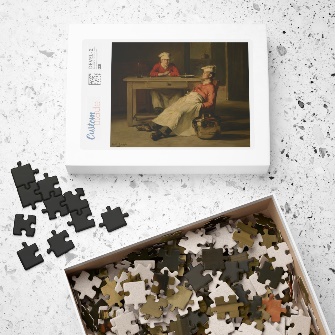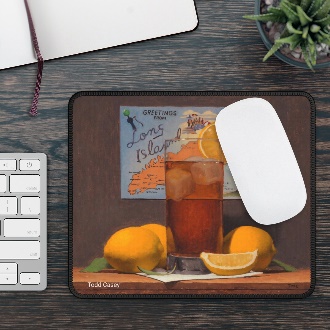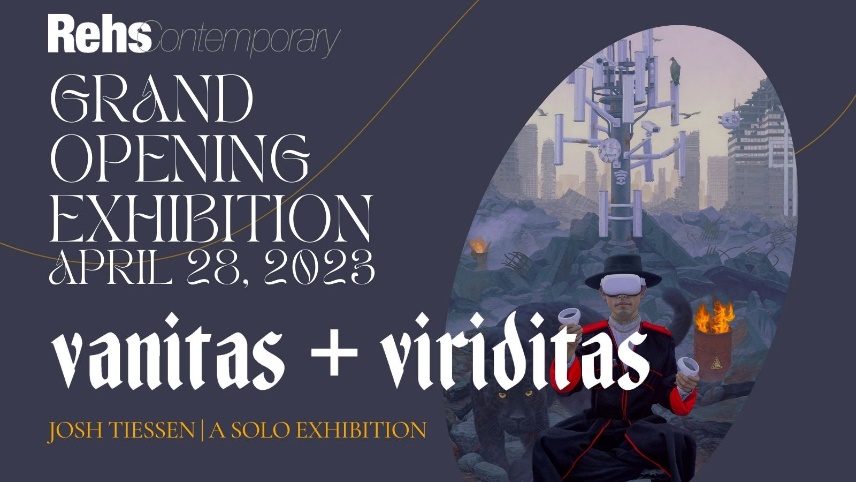COMMENTS ON THE ART MARKET
Our Gift Shop
Rehs Contemporary Galleries is a premier destination for art enthusiasts, and our online gift shop is a must-visit if you are a fan of our contemporary artists! The shop offers a diverse selection of items that feature images of currently available and previously sold artwork, including prints, puzzles, t-shirts, mugs, mouse pads, and more! Our shop also includes products with images from many historical artists and is a treasure trove of artistic inspiration… it’s the perfect place to find that special gift for the art lover in your life, or for yourself!
____________________
Gallery News
20 West 55th – Even Closer
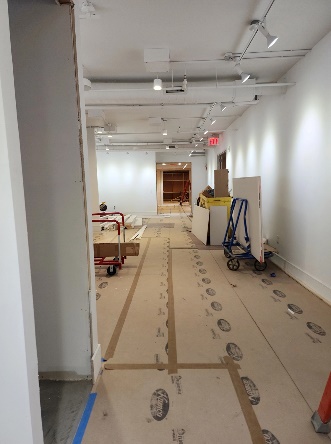 On Thursday, March 9th, we visited the new gallery space at 20 West 55th Street and were very impressed with the progress.
On Thursday, March 9th, we visited the new gallery space at 20 West 55th Street and were very impressed with the progress.
All floorings are in, and not only have the doors arrived, but several have been installed; among them are the front doors! The office and closet doors will be installed by next week, and then the painters will return to do their touch-ups. The carpenters are working hard on the storage area, which looks great. Once installed, the crew will line all the shelves with carpet (to protect the paintings as they are moved in and out). Most of the track lighting is up and working; boy, is it bright now. Then they can do the big clean-up and install the dark blue fabric in the historical gallery.
The low voltage work (IT, alarm, cameras, speakers, etc.) is in its final phase, and Verizon will be in next week to install our new VoIP phone system. Last August, we had the gallery’s phone number ported to a cell phone, and I cannot wait to get rid of it! Walking around with two cell phones is not fun. The office furniture is on its way from the manufacturer to a New Jersey warehouse, and we hope it will be delivered to us next week. We have another couple of weeks to wait for the reception desk – it is being built by a different firm.
The only item that we are still waiting on is the HVAC. According to Sean, the mechanical unit was shipped. The problem, there is no way to track it, which seemed odd to us, but what do we know?
On the bright side, we can start bringing in our artwork once the IT work is completed and the furniture is in. We are hopeful that this will happen before the end of March.
20 West 55th: Hopefully, Our Last Buildout Update
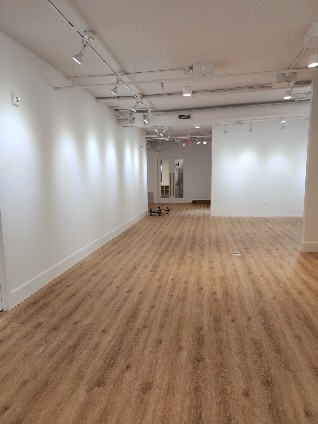 It was a stressful week for our new space. On Wednesday, we discovered that 55th Street was closed due to a high-ranking foreign official staying at the Peninsula Hotel – concrete barriers were up, while Police Officers, Secret Service, and others were all over the place. Rumors had it that the foreign dignitary was, in fact, the President of the Republic of Iraq, Abdul-Latif Rashid. This street closure could have caused a problem since our furniture delivery was scheduled for Thursday morning. Well, Sean, the gentleman overseeing the buildout, leaped into action! He went down to 6th Avenue and was able to work out that our furniture could arrive as scheduled between 6:30 and 9:00 am. The only caveat was the truck had to park on 6th Avenue, which meant the delivery people had to wheel all the items up the street to our building. Thankfully, by 8:00 am, Sean informed us everything had gone smoothly.
It was a stressful week for our new space. On Wednesday, we discovered that 55th Street was closed due to a high-ranking foreign official staying at the Peninsula Hotel – concrete barriers were up, while Police Officers, Secret Service, and others were all over the place. Rumors had it that the foreign dignitary was, in fact, the President of the Republic of Iraq, Abdul-Latif Rashid. This street closure could have caused a problem since our furniture delivery was scheduled for Thursday morning. Well, Sean, the gentleman overseeing the buildout, leaped into action! He went down to 6th Avenue and was able to work out that our furniture could arrive as scheduled between 6:30 and 9:00 am. The only caveat was the truck had to park on 6th Avenue, which meant the delivery people had to wheel all the items up the street to our building. Thankfully, by 8:00 am, Sean informed us everything had gone smoothly.
Amy & I got to the 55th Street space around 11:30 and were pleased to see that most of the furniture was in place. I will add that the AMC Transfer, Inc. installers were great. The only glitch, one small side table is about 2 inches too wide, so it does not fit in the space. Since the manufacturer did the measurements, I am sure they will correct the issue; at least, I hope they will.
Earlier in the week, Verizon had their people in to install the VoIP phone system. Two installers from the alarm company were there finishing up the wiring. We thought it was all done, but the original installer forgot to put in the wires for the three monitors, so these two gentlemen were snaking wires across the space (much of which was in the closed ceiling). It was impressive to see them at work, and no holes were made – at least not while we were there!! And just as we were leaving, a man showed up to install the glass privacy film.
All the doors, handles, and locks are in. The paper used to protect the floors was removed, and the space looks great. On Monday, they will install the dark blue wall covering, and then the painter will come to do any touchups. We are still waiting for two items, a small sofa in Lance’s office and the reception/Alyssa’s desk (the latter of which was built by a different company). The sofa was also supposed to be delivered on Thursday morning, but that company did not want to deal with the mess on 55th Street, so they are coming on Monday. The reception desk is due at the beginning of April.
What does this all mean? By next week, we can start moving everything out of the warehouse and into our new location at 20 West 55th Street. I hope this is the last buildout update, and my next report will start with the words – WE ARE IN!
Upcoming Gallery Exhibition
Vanitas + Viriditas
A Solo Exhibition of works by Josh Tiessen
"Where is the wisdom we have lost in knowledge? Where is the knowledge we have lost in information?" ––T.S. Eliot
Rehs Contemporary will present the newest body of work from Josh Tiessen – Vanitas and Viriditas. On view from April 28th through May 26th, the exhibition will be comprised of 23 meticulously crafted paintings and drawings, which required more than 5,000 hours of studio work over the course of three years!
Tiessen is an international award-winning artist based in Canada, best known for his hyper-surreal and uniquely shaped oil paintings. His pieces often delve into the interaction between the natural world and humanity, drawing on his studies in philosophy and theology. Continuing on that, Vanitas and Viriditas is an exploration of two divergent perspectives on wisdom and how we might flourish in a modern society filled with facts but mired in confusion.
Tiessen's Vanitas paintings include a figure named Qohelet (Hebrew for "Teacher"). Inspired by the Jewish wisdom book of Ecclesiastes, these works represent the vanity of humans striving for power, wealth, and knowledge, often at the expense of the earth. The art historical vanitas genre, popularized by 17th-century Dutch still life painters, is based on the refrain in Ecclesiastes, "Vanity of vanities, all is vanity." These images often included motifs such as skulls, moths, and ephemera to remind viewers of the temporality of life and the inevitability of death. Similarly in Tiessen's works, Qohelet seeks to deconstruct all the ways in which we find meaning and purpose in life that inescapably let us down. He chases after modern idols of science, technology, material consumption, and pleasure, ultimately finding them wanting. Is it all just smoke and mirrors? Is there wisdom in being at peace with the endless paradoxes, or is it cause for despair? The philosophy behind the Vanitas paintings is visually symbolized through an achromatic color palette, Japanese Zen rock gardens, and barren nihilistic landscapes.
The Viriditas paintings are built around a figure named Sophia (Greek for "wisdom"), inspired by the female personification of wisdom from the book of Proverbs. These works espouse virtues such as simplicity, humility, wonder, and awe, which are vital for cultivating ecological wisdom. The 12th-century nature mystic Hildegard von Bingen informed the character development of Sophia, from whom the Latin expression viriditas (translated as "holy greening") originates. Sophia lives in a harmonious relationship with the natural world, attuning herself to the seasonal rhythms of nature. The vernal color palette in these paintings is bright and cheery—emerald, sienna, yellow, and amethyst, accompanied by Celtic and Gothic Revival aesthetics.
Both Qohelet and Sophia are complemented by animal companions. Qohelet is disenchanted with the natural world and ambivalent toward his fellow creatures since 'there is nothing new under the sun'. Sophia seeks to learn from the symphony of creation, heeding the advice of the ancient sage named Job:
"But ask the animals, and they will teach you,
the birds of the air, and they will tell you;
ask the plants of the earth, and they will teach you,
and the fish of the sea will declare to you.
Who among all these does not know
that the hand of the Lord has done this?
In his hand is the life of every living thing
and the breath of every human being."
For Qohelet, wisdom is pursued with "fear and trembling," accepting the sobering truth that everything in this world is fleeting. For Sophia, the path to wisdom is re-enchantment with the earth and its Creator, manifested in embodied skillful living. The original meaning of the word philosophy –– "love of wisdom" is thereby restored. Flourishing can occur when we align ourselves with the wise grain of the universe.
____________________
Stocks & Crypto
By: Lance
Welp, we’re through the first quarter of the year, and things don’t seem as bad as many feared… March saw its ups and downs but ultimately ended the month on a nice run. And possibly most importantly, our financial system seemed to weather the Silicon Valley Bank storm fairly well – I guess there is still a bit of uncertainty surrounding that mess, but the panic has certainly subsided.
Looking at the major indexes, the Dow closed out March down 2.3%, though it was down more than 6.5% in the middle of the month… it’s nearly even on the year, with just a .38% gain – nothing great, but considering how volatile the year has been, I think that’s a win. The NASDAQ and S&P are in better shape - they gained 4.9% and 2%, respectively, for the month… and are up 14.8% and 5.5% for the year! Who would’ve thought that would be the case with all this talk about inflation?!
Turning to currencies and commodities… both the Euro and Pound gained some strength against the dollar. The Euro now sits at $1.08 (up 2.3%), while the Pound has climbed to $1.23 (up 3.2%). Keeping with the overall trend, gold was up too… actually, it was up quite a bit – more than 8% for the month. The price jump mostly coincided with the SVB news, so there’s likely a connection there. Crude dipped below $70 for the first time since late 2021, though it recovered in the final week and now sits at $75… the general range it’s been hovering around for the past few months.
In similar fashion to gold, cryptocurrencies saw sizable gains on the month, most of which happened in the aftermath of SVB’s failure… Bitcoin surged 27.5% for the month, now sitting above $28,000. Ethereum is up more than 17% for the month, while the runt of the litter, Litecoin, is essentially even for March… it briefly dipped more than 20% as SVB failed. It’s worth keeping in mind that many tech companies and startups kept their money with SVB, so it’s not surprising to see this volatility in the crypto arena.
I honestly have no idea what it all means for where we’re headed… analysts suspect that the Fed is reaching the end of its rate hiking, though concerns of a recession still linger. On the bright side, it’s starting to get a bit warmer out, and the new gallery space is just about finished up… looking forward to not being stuck in my apartment every day!
____________________
Sad News
The Passing of John Stobart
 It is with great sadness that Rehs Contemporary Galleries, Inc. announces the passing of John Stobart, one of the world's most renowned maritime artists, on March 2nd, 2023. He was 93 years old.
It is with great sadness that Rehs Contemporary Galleries, Inc. announces the passing of John Stobart, one of the world's most renowned maritime artists, on March 2nd, 2023. He was 93 years old.
John Stobart is widely celebrated for his breathtaking depictions of historic maritime scenes both at sea and important port cities. His works can be found in the collections of museums, corporations, and private collectors around the world.
He will be deeply missed by his family, friends, and the countless people around the world who admired his work and were touched by his kindness.
Natasha Gural wrote a wonderful article about John for Forbes.com: Celebrating The Luminous Legacy Of Preeminent Maritime Painter John Stobart
____________________
The Dark Side
By: Nathan & Amy
The Bouvier Affair: Still Chugging Along
Last August, it seemed that the infamous Bouvier affair that has rocked the art world since 2015 was coming to a close after Russian oligarch and art collector Dimitri Rybolovlev successfully had a criminal investigation opened in Geneva against Swiss art dealer Yves Bouvier. But now, the Russian billionaire wants to expand the feud and take the fight to others allegedly involved, namely the auction house Sotheby’s. And according to a recent ruling by a New York judge, he just might get his wish.
 In summary, since 2015, Rybolovlev has accused Bouvier of having charged excessive fees when acting as his agent in acquiring his impressive art collection between 2003 and 2014. According to the Russian oligarch, Bouvier agreed that he would only take a 2% fee, but in many cases, he managed to swindle him out of as much as 40%. The most prominent example is that Bouvier purchased Leonardo da Vinci’s Salvator Mundi allegedly on Rybolovlev’s behalf for $75 million. However, he turned around and charged Rybolovlev $127.5 million. Rybolovlev alleges that Bouvier had stolen about $1.1 billion over the years from him. Bouvier, of course, denies all of this, saying that he did not act as his agent but as an independent dealer and could determine the profit margins he wanted.
In summary, since 2015, Rybolovlev has accused Bouvier of having charged excessive fees when acting as his agent in acquiring his impressive art collection between 2003 and 2014. According to the Russian oligarch, Bouvier agreed that he would only take a 2% fee, but in many cases, he managed to swindle him out of as much as 40%. The most prominent example is that Bouvier purchased Leonardo da Vinci’s Salvator Mundi allegedly on Rybolovlev’s behalf for $75 million. However, he turned around and charged Rybolovlev $127.5 million. Rybolovlev alleges that Bouvier had stolen about $1.1 billion over the years from him. Bouvier, of course, denies all of this, saying that he did not act as his agent but as an independent dealer and could determine the profit margins he wanted.
But now Bouvier isn’t enough for Rybolovlev. The Russian billionaire is still going after Sotheby’s, after hitting them with a $380 million lawsuit in 2018 for allegedly aiding and abetting Bouvier in his “fraud and breach of fiduciary duty”. He claims that Sotheby’s helped Bouvier defraud him, listing thirty-eight different transactions between 2004 and 2014 where the Russian billionaire alleges the auction house knew of Bouvier’s plans to overcharge Rybolovlev. Last week, Judge Jesse Furman of the district court for the Southern District of New York dismissed many of the claims Rybolovlev had put forth, stating that the time to submit some of those claims had lapsed. However, some of Rybolovlev’s claims still stand, including the claims pertaining to Bouvier’s purchase of René Magritte’s Le Domaine d’Arnheim (purchased by Bouvier in December 2011), Gustav Klimt’s Wasserschlangen II (purchased by Bouvier in September 2012), Amedeo Modigliani’s Tête (purchased by Bouvier January 2013), and Da Vinci’s Salvator Mundi (purchased by Bouvier in May 2013). According to Rybolovlev’s legal team, “our remaining claims account for over $200 million of damages inflicted to our clients. These are very important episodes of the case, and we are looking forward to jury trial.” Similarly, Sotheby’s legal team stated it “will continue to defend this case vigorously and looks forward to prevailing on the remainder of the case at trial.” Judge Furman, being caught in the middle of all this, urged caution, warning that “the parties should try to settle this case without the need for a trial that would be expensive, risky, and potentially embarrassing to both sides.”
According to a letter submitted to the court, both legal teams have since entered into mediation.
Fraud And Forgery In The Great White North
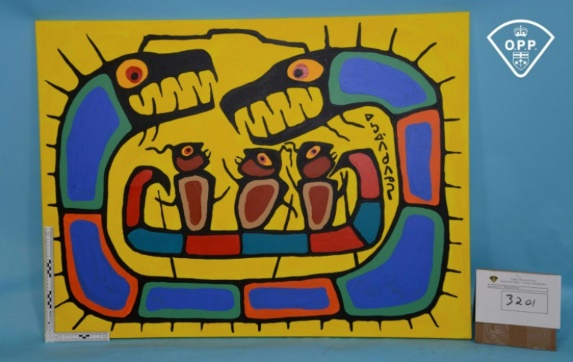 In what some call the dismantling of the world’s biggest art fraud conspiracy, police in Ontario arrested eight people last Wednesday in connection to an art forgery scheme responsible for creating thousands of fake works and passing them off as originals by the Canadian indigenous artist Norval Morrisseau.
In what some call the dismantling of the world’s biggest art fraud conspiracy, police in Ontario arrested eight people last Wednesday in connection to an art forgery scheme responsible for creating thousands of fake works and passing them off as originals by the Canadian indigenous artist Norval Morrisseau.
Morrisseau was an incredibly influential indigenous artist who was a member of the Professional Native Indian Artists Incorporation, commonly known as the Indian Group of Seven. This group was mainly made up of seven indigenous artists, including Morrisseau, Jackson Beardy, Daphne Odjig, and several others, and are often credited with bringing indigenous art into the mainstream in Canada. Morrisseau passed away in 2007, but even while he was alive, he was incredibly concerned about forgeries of his work, founding the Norval Morrisseau Heritage Society (NMHS) to counteract this. Morrisseau forgeries are commonplace mainly because, until the founding of the NMHS, the artist never kept track of his work or created a catalogue. People who knew him in Ontario speak of how he would trade paintings for groceries in his early career. This particular large-scale forgery ring had been operating since 1996 in Thunder Bay, Ontario, and was brought down because of a documentary film and a related cold-case murder.
Detective Sergeant Jason Rybak of the Thunder Bay Police Service said that he was looking into the unsolved 1984 murder of Scott Dove when he came across the documentary There Are No Fakes, directed by Jamie Kastner. The film follows the story of Kevin Hearn, the keyboardist of the band the Barenaked Ladies, and his lawsuit against the Maslak McLeod Gallery in Toronto after selling him a fake Morrisseau painting. About five months after the documentary’s release, Hearn was awarded C$60K (or US$45K) by the Ontario Court of Appeal after the gallery failed to prove the painting was by Morrisseau. When Sergeant Rybak saw the documentary, he found that one of the people named as one of the biggest producers of Morrisseau forgeries in Canada was one of the main suspects in Scott Dove’s murder. The documentary describes Gary Lamont as a local gangster and a drug dealer who has also been repeatedly convicted of sexual assault over the past thirty years. The arrested group of eight, which included Lamont, are accused of operating a sort of forgery assembly line to create fake Morrisseau works. The group recruited indigenous artists, sometimes paying them with alcohol and drugs, to create works in Morrisseau’s style. One of the eight arrested was Benjamin Paul Morrisseau, the artist’s nephew. Because the NMHS was not founded until 2005, there was no central authority to clamp down on the proliferation of these forgeries. Over the years, works from Lamont’s group started making their way into galleries across Canada, with some being sold overseas in China, Germany, and the United States. Some estimate that there are probably ten times more forgeries than legitimate Morrisseau works on the market today and that there might be Morrisseau forgeries held in the Smithsonian collection.
Norval Morrisseau is now known today as one of Canada’s greatest artists, with some calling him the Picasso of the North. So clearly, those who knew him and those who work to maintain his legacy are outraged by these revelations. The executive director of Morrisseau’s estate Cory Dingle said, “one of the world’s greatest spiritual and cultural icons of Canada in the Indigenous community has been defrauded.” The police have since confiscated over a thousand paintings, prints, and other works. Each of these works was sold to their current owners for tens of thousands of dollars, meaning that over the years, the forgery ring must have made close to $100 million. Ontario police suggest that those who may have bought fake Morrisseau works seek legal counsel, and that the Law Society of Ontario’s referral program offers a free half-hour legal consultation.
Family Reunion: The Dutch Portraits Brought Back Together After 200 Years
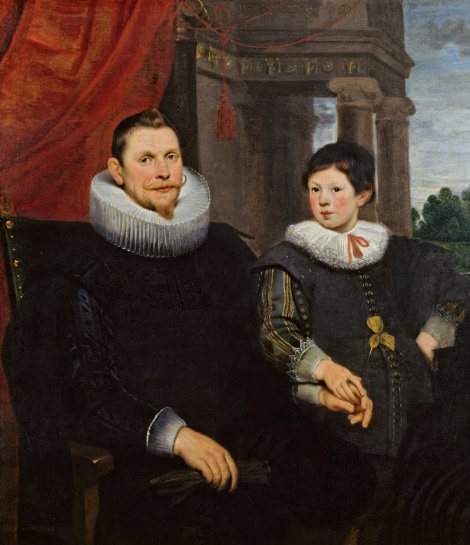 People can do a lot through the power of the Internet. In December, I wrote about how a Massachusetts art collector tracked down a stolen masterwork by the Dutch Golden Age painter Hendrick Avercamp because of an image of the painting used to decorate a throw pillow advertised online for $18. But now, more Internet sleuths have fixed something that has quite literally been broken for two centuries.
People can do a lot through the power of the Internet. In December, I wrote about how a Massachusetts art collector tracked down a stolen masterwork by the Dutch Golden Age painter Hendrick Avercamp because of an image of the painting used to decorate a throw pillow advertised online for $18. But now, more Internet sleuths have fixed something that has quite literally been broken for two centuries.
Double Portrait of a Father and Son by the Antwerp portraitist Cornelis de Vos hangs at the Nivaagaard Collection, a small museum about a half-hour drive north of Copenhagen. It mainly consists of a historic estate with beautifully-manicured gardens and a world-class art collection. The museum features many works by northern European artists from the Renaissance and Baroque periods, including Rembrandt, Lucas Cranach the Elder, Pieter Brueghel the Younger, Pieter Claesz, Johan Christian Dahl, and Wilhelm Marstrand. When signs of a missing third person were discovered, the Nivaagaard Collection’s special consultant Jørgen Wadum teamed up with Angela Jager, a curator at the Netherlands Institute for Art History, to uncover more. The Double Portrait has been a part of the Nivaagaard Collection since its founding in 1908 but was sent to the National Gallery of Denmark in Copenhagen for restoration in 1966. Eagle-eyed art connoisseurs might notice hints of a dress in the bottom right-hand corner, but the existence of a missing mother was confirmed when photos from the 1966 restoration show the canvas taken out of its frame, revealing a hidden hand.
It took little effort to locate the lost third figure. Wadum says that he found the mother after a quick Google search, leading to a portrait of a woman wearing a ruff similar to the father’s. Portrait of a Lady was likely separated from the family portrait sometime in the mid-nineteenth century after being damaged. It was last sold at auction at Christie’s London in 2014 for £292K w/p to Salomon Lilian, a gallery owner in Amsterdam and Geneva specializing in Dutch Old Master paintings. Originally, the background was a plainer dark brown. Lilian’s restoration uncovered the original overcast sky and treeline, making the connection to the Double Portrait that much easier. After this discovery, a grant from the New Carlsberg Foundation allowed the Nivaagaard Collection to buy the portrait from Lilian. Now, after nearly two hundred years apart, the whole family has been reunited again.
Coin Dealer Arrested
I rarely choose to update one of my stories, but one I wrote about a few years ago now belongs in our Dark Side section.
In December 2020, I wrote about a rare ancient gold coin, the Eid Mar, that made history when it brought far more than its ‘weight in gold.’ The sale of the coin set an auction record when it sold for $4.1M (I reported it sold for $4.2M, but that’s probably a rounding error) by the London-based auction house Roma Numismatics.
Now it turns out that the British coin dealer, Richard Beale, who owned the London auction house, has been arrested. Beale has quite the talent for creating fictional stories about the provenance of valuable coins.
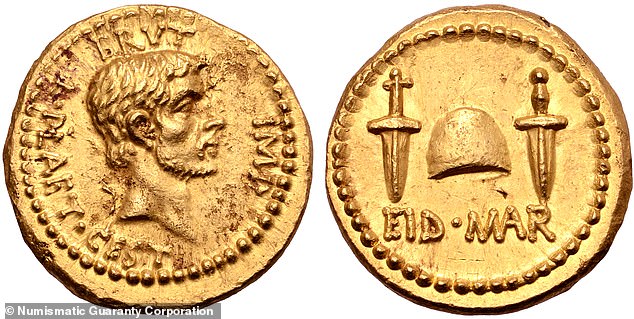 First, he claimed the Eid Mar coin came from a mysterious Swiss collection that couldn’t be verified. Then, when he finally sold it at auction in 2020, he attributed it to the collection of Baron Dominique de Chambrier. And then there was the Sicily Naxos Coin, which first appeared on the market in 2013 with no provenance at all. But that didn’t stop Beale from creating a fake history for the coin and selling it at the same sale in 2020 as the Eid Mar coin for $293K! It seems like Beale should try his hand at writing fiction novels instead of dealing in coins – he certainly has a creative imagination!
First, he claimed the Eid Mar coin came from a mysterious Swiss collection that couldn’t be verified. Then, when he finally sold it at auction in 2020, he attributed it to the collection of Baron Dominique de Chambrier. And then there was the Sicily Naxos Coin, which first appeared on the market in 2013 with no provenance at all. But that didn’t stop Beale from creating a fake history for the coin and selling it at the same sale in 2020 as the Eid Mar coin for $293K! It seems like Beale should try his hand at writing fiction novels instead of dealing in coins – he certainly has a creative imagination!
Unfortunately for Beale, his deceitful actions were eventually uncovered when the Naxos coin, and several other items were seized at JFK airport while being smuggled into New York.
Ultimately, Beale’s luck ran out, and the Antiquities Trafficking Unit (ATU) caught him.
The ATU was created in 2017 by the Manhattan District Attorney’s Office to combat the trafficking of cultural artifacts and antiquities. The unit is lead by Assistant DA Matthew Bodganos and is staffed by experienced prosecutors, investigators, and analysts who work to identify, investigate, and prosecute individuals and organizations involved in the illegal trade of cultural heritage items.
The ATU operates in collaboration with law enforcement agencies both domestically and internationally to recover stolen artifacts and repatriate them to their countries of origin. Since their inception, they have successfully recovered thousands of artifacts worth over $300 million.
In addition to their law enforcement work, the ATU also engages in public outreach and education programs to raise awareness about the importance of protecting cultural heritage items and the risks associated with their illicit trade.
So, while their work is serious and important, the ATU also takes a proactive and engaging approach to raising awareness about cultural heritage protection. Maybe they could even organize a “Provenance 101” course for coin dealers like Beale to help them avoid similar predicaments in the future!
After the great work by the ATU, Beale is now facing charges of Grand Larceny in the First Degree and Criminal Possession of Stolen Property. I bet he wishes he had stuck to dealing with regular old coins instead of trying to get rich off of ancient treasures. Remember, folks, always tell the truth when it comes to provenance!
Family Feud Over Rockwell Drawings
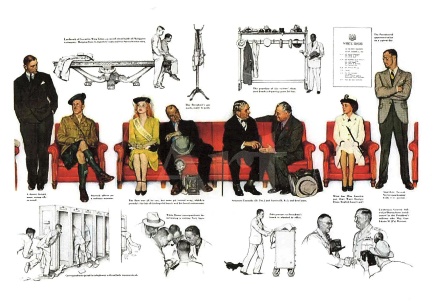 A family is currently dividing itself into factions because of the disputed ownership of some drawings. But they’re not just any drawings…
A family is currently dividing itself into factions because of the disputed ownership of some drawings. But they’re not just any drawings…
So You Want To See the President! is a series of illustrations created by the American artist Norman Rockwell in 1943. The drawings show various figures sitting around waiting for an audience with the president, which in this case was Franklin D. Roosevelt. Later published in the Saturday Evening Post, the illustrations depict journalists, both British and American military officers, members of Congress like Texas senator Thomas Terry Connally, and even that year’s Miss America. Rockwell gifted the original illustrations to FDR’s press secretary Stephen Early, who is also featured in the works. In a letter thanking Rockwell, Early wrote, “I am as proud of these original sketches of yours as Churchill was of the R.A.F.” Now, some 80 years later, a legal battle has begun over which of the press secretary’s descendants have an ownership interest in the works.
In 2017, in a scene that seems like it was written for a movie, the press secretary’s son Thomas Early was watching a televised interview with President Donald Trump filmed in the White House when he saw something very familiar in the background: the original Rockwell illustrations which they thought were in storage. Mr. Early reached out to the White House curator, William Allman, and asked how the drawings wound up hanging in the White House. According to the White House, the illustrations are the property of William Elam, Thomas Early’s nephew, the son of his sister Helen.
William Elam claims that his grandfather had gifted the Rockwell drawings to his daughter, William’s mother Helen, shortly before his death in 1951. In 1978, Helen decided to loan the illustrations to the White House. When Helen later transferred ownership of the illustrations to her son William, he agreed to let the White House hang onto them for a little longer. However, the drawings’ ownership is not as clear-cut as Mr. Elam says. Two of his cousins and his aunt are all parties to a lawsuit filed last month in Virginia. The suit alleges that, by loaning the illustrations to the White House art collection, Helen Early Elam went back on a promise to keep the Rockwells in storage as part of the family’s shared inheritance. It further alleges that William Elam loaned the drawings to the White House to keep them away from the rest of the family and claim sole ownership. So, Elam’s cousins are essentially arguing that the White House art collection was being used as a way to, in effect, launder a work of art. Court documents show that, even decades ago, ownership of the Rockwells was not exactly clear. Mr. Elam argues that one of his mother’s brothers, Stephen Jr., told Helen to sell the Rockwells to pay for medical and living expenses, indicating that the illustrations belonged solely to Helen. However, Mr. Elam’s cousins assert that Helen asked for permission from her brother to exhibit the drawings in San Francisco in 1980, which they argue proves that Helen recognized the Rockwells as being owned by the family collectively.
Last summer, when the family feud began to boil over, the White House decided to return the Rockwells to Mr. Elam pending the dispute’s resolution. The collective value of the illustrations is said to be in the area of $8 million. Pretrial proceedings are set to commence on April 5th.
Unknown Pollock Rediscovered In Bulgaria
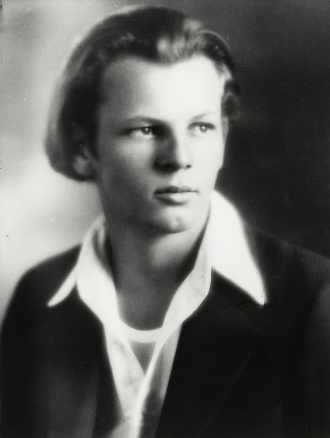 Greece’s anti-organized crime task force found a lost painting possibly by the great American abstract expressionist artist Jackson Pollock during a raid on suspected art traffickers in Bulgaria. Last week, Bulgarian National Radio reported that Europol organized a joint operation between Greece and Bulgaria to investigate a group operating in both countries, carrying out the raid in question in the Bulgarian capital of Sofia. Preliminary examinations suggest that the painting seized is an uncatalogued work created around 1949. The piece features an inscription on the back, dedicating the work to Lauren Bacall. Based on the inscription and the date, Pollock made the painting for the actress’s 25th birthday.
Greece’s anti-organized crime task force found a lost painting possibly by the great American abstract expressionist artist Jackson Pollock during a raid on suspected art traffickers in Bulgaria. Last week, Bulgarian National Radio reported that Europol organized a joint operation between Greece and Bulgaria to investigate a group operating in both countries, carrying out the raid in question in the Bulgarian capital of Sofia. Preliminary examinations suggest that the painting seized is an uncatalogued work created around 1949. The piece features an inscription on the back, dedicating the work to Lauren Bacall. Based on the inscription and the date, Pollock made the painting for the actress’s 25th birthday.
Though a prolific artist even in his own lifetime, Pollock’s catalogue is not as extensive as some of his contemporaries, mainly because he died in a car accident, at the age of forty-four, in 1956. The painting could be worth as much as €50 million ($53.9 million), which would make it one of the most valuable Pollock works in existence. Pollock’s auction record was set in 2021 when Number 17 sold at Sotheby’s New York for $53 million ($61M w/p) during the Macklowe Collection sales. Authorities carried out several other raids against the group in Athens and on Crete, confiscating several other works. Authorities have not released an image of the work or details of the other seized paintings. The suspected Pollock is now at Sofia’s National Art Gallery, where specialists will continue to uncover more information.
____________________
The Art Market
By: Nathan
Christie’s London Art Of The Surreal
On Tuesday, February 28, Christie’s London hosted a small sale called the Art of the Surreal. It came on the heels of the much longer twentieth- and twenty-first-century sale earlier that day. Most of the thirty-two available lots are by some big names in twentieth-century surrealism, Dadaism, and general abstract art, such as Joan Miró, Paul Delvaux, and Leonora Carrington. However, one of the most represented artists in the sale and the creator of most of the top lots was the Belgian master René Magritte (w/p = with buyer’s premium).
The sale’s top lot was Magritte’s Le retour, a work of gouache on paper made around 1950. Christie’s specialists knew that this work would draw a great deal of attention, giving it a £4M to £6M estimate range and using its image on the sales promotional material online. The work last sold at auction in February 2004 at another one of Christie’s surrealist art sales, selling for £990.85K w/p. It did far better this time, selling for £5.1M / $6.17M (or £6.13M / $7.4M w/p). Magritte also took second place with the oil painting Souvenir de voyage, showing either a very large feather or a very small Leaning Tower of Pisa leaning against each other against a warm-colored sky. It’s a small canvas, barely 16 by 12 inches, created around 1958. It last sold at auction in 2009, where it went for £746.85K w/p at a Sotheby’s London modern & impressionist sale. Like Le retour, it did considerably better on Tuesday, selling for £4.6M / $5.56M (or £5.56M / $6.7M w/p).
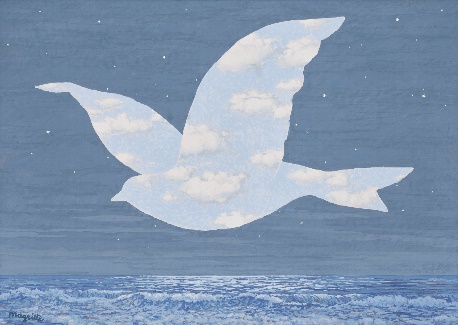 The third-place lot was not by Magritte but by the Spanish surrealist Óscar Domínguez. Machine à coudre électro-sexuelle, created around 1935, is one of the painter’s most well-known works. This is actually the third time this specific painting set an auction record for Domínguez. The first time was in 2008 at a Christie’s London impressionist and modern art sale, where it sold for £1.5M w/p. Then, a few years later in 2013, at another Christie’s London sale, it sold again for £2.1M w/p. And now, in 2023, again at Christie’s London, the painting reset the artist’s auction record at £3.8M / $4.6M (or £4.6M / $5.57M w/p). The only surprise at the Art of the Surreal sale was, not surprisingly, another of Magritte’s works. The untitled work is a multimedia piece using ink, gouache, and photomontage on card paper. It is also a relatively early work, created in the mid-1920s, and has been in the same private collection since 1969. Estimated to sell for between £250K and £350K, the work eventually sold for double the high estimate at £700K / $847K (or £882K / $1.06M w/p).
The third-place lot was not by Magritte but by the Spanish surrealist Óscar Domínguez. Machine à coudre électro-sexuelle, created around 1935, is one of the painter’s most well-known works. This is actually the third time this specific painting set an auction record for Domínguez. The first time was in 2008 at a Christie’s London impressionist and modern art sale, where it sold for £1.5M w/p. Then, a few years later in 2013, at another Christie’s London sale, it sold again for £2.1M w/p. And now, in 2023, again at Christie’s London, the painting reset the artist’s auction record at £3.8M / $4.6M (or £4.6M / $5.57M w/p). The only surprise at the Art of the Surreal sale was, not surprisingly, another of Magritte’s works. The untitled work is a multimedia piece using ink, gouache, and photomontage on card paper. It is also a relatively early work, created in the mid-1920s, and has been in the same private collection since 1969. Estimated to sell for between £250K and £350K, the work eventually sold for double the high estimate at £700K / $847K (or £882K / $1.06M w/p).
The house specialists did very well on Tuesday, with fourteen of the thirty-two available lots (44%) selling within their estimates. Another seven lots (22%) sold above, nine lots (28%) sold below, and only two lots (6%) went unsold. With a pre-sale estimate range of £27.5M to £42M, the entire sale brought in £31.74M / $34.41M.
Sotheby’s Modern & Contemporary Evening Sale
 On Wednesday March 1st, Sotheby’s London hosted a modern and contemporary evening sale featuring thirty-six works from Picasso, Pissarro, and Vlaminck to Warhol, Haring, and Hirst. It was a relatively short affair, barely lasting more than an hour (w/p = with buyer’s premium). The star of the sale was a work that had been on people’s minds for months leading up to the auction. I previously wrote about it back in November, when the Dutch government returned the work to a family who was forced to sell the painting during the Holocaust. Wassily Kandinsky’s Murnau with Church II, created in 1910, is one of the earliest works by the Russian artist on his road toward the abstraction he was later known for. The painting was in the collection of Johanna Margarethe Stern-Lippman, a Dutch Jewish collector who was killed at Auschwitz in 1944. This decision came after the family submitted new evidence to the restitutions commission of the Netherlands, including a postcard featuring an image of the painting. Although Murnau with Church II fell short of its £37M low estimate, it still came out at the top of the sale by a long way when the hammer came down at £33M / $39.6M (or £37.2M / $44.6M w/p).
On Wednesday March 1st, Sotheby’s London hosted a modern and contemporary evening sale featuring thirty-six works from Picasso, Pissarro, and Vlaminck to Warhol, Haring, and Hirst. It was a relatively short affair, barely lasting more than an hour (w/p = with buyer’s premium). The star of the sale was a work that had been on people’s minds for months leading up to the auction. I previously wrote about it back in November, when the Dutch government returned the work to a family who was forced to sell the painting during the Holocaust. Wassily Kandinsky’s Murnau with Church II, created in 1910, is one of the earliest works by the Russian artist on his road toward the abstraction he was later known for. The painting was in the collection of Johanna Margarethe Stern-Lippman, a Dutch Jewish collector who was killed at Auschwitz in 1944. This decision came after the family submitted new evidence to the restitutions commission of the Netherlands, including a postcard featuring an image of the painting. Although Murnau with Church II fell short of its £37M low estimate, it still came out at the top of the sale by a long way when the hammer came down at £33M / $39.6M (or £37.2M / $44.6M w/p).
Coming in second, Gerhard Richter’s 1986 work Abstraktes Bild is an incredibly large abstract painting made of two conjoined canvases, measuring over 8½ by 13 feet. It last sold at Sotheby’s New York in 2007 for $9.79M w/p. This time, the painting did much better, slightly exceeding its estimate range and reaching £20.8M / $24.9M (or £24.2M / $29M w/p). Finally, in third was Pablo Picasso’s Fillette au bateau, Maya. The work has an impressive provenance, having been acquired by the Swiss art dealer Thomas Ammann in 1991 before making its way to New York’s Gagosian Gallery and then to the collection of fashion designer Gianni Versace. Versace consigned the painting at Sotheby’s London in 1999, where it was purchased for £3.7M w/p by the collector who consigned it for Wednesday’s sale. The work is a portrait of Picasso’s daughter Maya, who was around three years old when it was created in 1938. It is one of about fourteen portraits Picasso created of his daughter around this time. Estimated to sell for at least £12M, several bidders brought the hammer price further up into its estimate range at £15.5M / $18.6M (or £18.09M / $21.7M w/p).
While it didn’t make the top three, there was one lot featured in Wednesday’s sale that, similar to the Kandinsky, has an incredibly fascinating story, and it also involves Nazis. Dans på stranden, or Dance on the Beach, is a long, 35.4-by-158.5-inch tempera on canvas by the Norwegian painter Edvard Munch. It was originally commissioned by the director Max Reinhardt, who ask Munch to create several friezes to decorate the entrance room of his Kammerspiele theater in Berlin. However, the painting did not hang there for very long. The theater was refurbished, and the paintings were sold to various collectors and galleries. When the Nazis came to power in 1933, Edvard Munch and many other modern artists had all of their work labeled degenerate by the German government, and many museums were forced to deaccession their work. This included works by Chagall, Ernst, Kandinsky, Mondrian, Klee, and other artists associated with Cubism, Surrealism, Dada, and Bauhaus, among other modernist movements. Munch’s friend Thomas Olsen acquired much of his work in the 1930s as Germany’s museums were ridding themselves of “degenerate” art, thereby saving many of his paintings from eventual destruction or appropriation. Dance on the Beach has remained in the Olsen family collection ever since and sold at Sotheby’s for £14.5M / $17.4M (or £16.9M / $20.3M w/p), falling nicely within its £12M to £20M estimate range.
Of the thirty-five available lots, fourteen sold within estimate, giving Sotheby’s specialists a 40% accuracy rate. Another eight lots (23%) sold below estimate, seven lots (20%) sold above, and six lots (17%) went unsold. The entire sale made £137.18M / $164.6M, barely climbing past its presale total low estimate of £133.6M. The sale would have fared far better had some lots, like an untitled enamel on aluminum work by Christopher Wool, estimated to sell for at least £2.5M, attracted more attention and met their reserves.
Sotheby’s London (Women) Artists
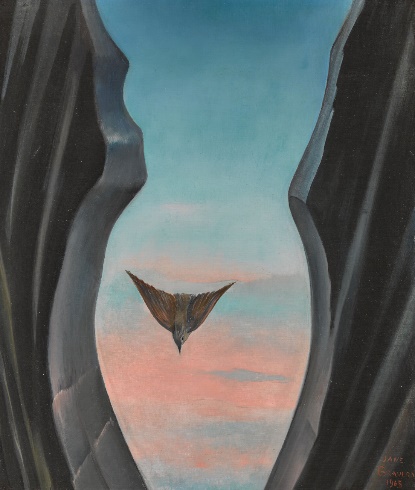 On Thursday March 16th, Sotheby’s London hosted a short but very interesting sale dedicated completely to female artists creatively called “(Women) Artists”. The fifty-four available lots came from many different artists and creators across many styles and periods, including works by Louise Bourgeois, Leonor Fini, Yayoi Kusama, Kara Walker, and Mary Cassatt. The sale’s organizers promised to “offer original perspectives, initiate innovative dialogues and generate fresh appreciation for each work presented.” (w/p = with buyer’s premium)
On Thursday March 16th, Sotheby’s London hosted a short but very interesting sale dedicated completely to female artists creatively called “(Women) Artists”. The fifty-four available lots came from many different artists and creators across many styles and periods, including works by Louise Bourgeois, Leonor Fini, Yayoi Kusama, Kara Walker, and Mary Cassatt. The sale’s organizers promised to “offer original perspectives, initiate innovative dialogues and generate fresh appreciation for each work presented.” (w/p = with buyer’s premium)
That day’s top lot was also one of that day’s biggest surprises. L’Esprit Saint by Jane Graverol is a 1965 oil on canvas painting measuring 24.75 by 21.25 inches. Graverol is probably one of the best-known female artists within surrealism, but there’s not much of the overtly surreal in this work at first glance. Rocky black outcroppings rise on each side of the work, directing all attention onto a small bird against a warm, cloudy sky. However, the rock structures and the bird create a blank space in the form of a nude female body. The title of the work, literally meaning Holy Spirit, is in reference to the bird. Birds in flight, often doves, are a common symbol of the Holy Spirit or Holy Ghost in Christian iconography. However, while white doves projecting rays of light most often symbolize the Holy Spirit, Graverol chose a more common-looking reddish-brown bird, similar to a sparrow, as her sacred symbol. Though estimated to sell for no more than £80K, that day’s bidders fought until the hammer came down at £400K / $483.5K (or £508K / $614K w/p), exactly five times the high estimate.
Only a couple of lots later, the sale came to its second-place work. Composition verticale-horizontale was originally created by Sophie Taeuber-Arp around 1928 as a work on paper. It was part of Taeuber-Arp’s designs for her remodeling of the Aubette building in Strasbourg. However, the work sold at Sotheby’s on Thursday is not the original. The Sotheby’s lot is an oil painting on wood relief created between 1943 and 1956 by Taeuber-Arp’s husband and fellow artist Jean Arp. Taeuber-Arp died from a carbon monoxide leak in 1943, and her husband spent much of his life promoting her oeuvre and legacy, including recreating some of her works. In many of Jean Arp’s recreations, he almost always created an enlarged version identical to the original in its design and a second version that served as more of a reinterpretation. The work offered at Sotheby’s is one of the former, an exact copy of the original work on paper. Sotheby’s specialists predicted the work to sell for between £140K and £180K, with the final bid falling nicely in between at £160K / $193.4K (or £203.2K / $245.6K w/p). And finally, in third place was Marie Vassilieff’s cubist-inspired L’Enfant au poisson. Vassilieff was one of the first modernist artists from the Russian Empire to emigrate to Paris, moving there around 1905. She studied under Henri Matisse and later founded her own art school, where she recruited her friend Fernand Léger to teach classes. Though not as intimately involved in the cubist movement as Pablo Picasso and Georges Braque, Vassilieff was heavily influenced by cubism, as shown by this portrait of a girl with a fish created around 1920. The painting hit its low estimate, selling for £80K / $96.7K (or £101.6K / $122.8K w/p).
Of course, the Graverol work was a great surprise coming out on top, but there was another surprise early in the sale. An untitled work by Miriam Cahn is a study in pink and blue, forming a covered face with two deep, dark eyes staring back at the viewer. The oil on canvas painting was created around 1995 and was estimated to sell for no more than £8K. Like the Graverol painting, the Cahn sold for five times its estimate at £40K / $48.35K (or £50.8K / $61.4K w/p). The (Women) Artists sale did incredibly well, with seventeen of the fifty-four available lots selling within their estimates, giving Sotheby’s specialists a 31% accuracy rate. Seven lots (13%) sold below estimate, while twelve (22%) sold above. For a sale that did as well as it did, an unusual amount went unsold – eighteen lots, or about 33%. Graverol’s L’Esprit Saint selling for as much as it did certainly helped bring the total hammer price up to £1,219,300 / $1,473,817. This was on the higher end of the presale total estimate range, with the minimum being £902K.
____________________
Deeper Thoughts
By: Nathan
Banksy On A Stamp
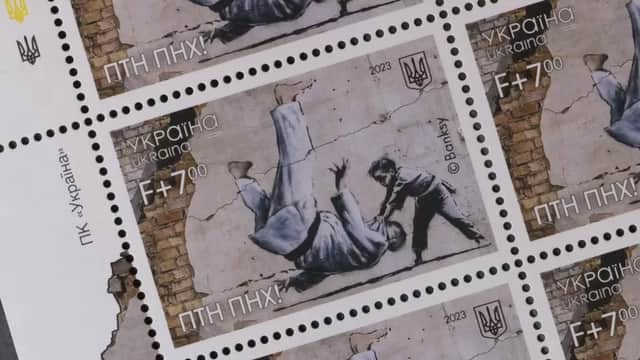 In November, locals in and around Kyiv discovered several murals by the British street artist Banksy. About a month later, eight people were detained trying to remove a wall segment containing a mural, leading Kyiv’s Regional Military Administration to install protective polycarbonate coverings. Motion sensors and alarms will also protect the paintings. Of course, the fact that they exist in a warzone is another reason for the protective measures. However, the graffiti works have become such recognizable symbols of Ukraine’s ongoing struggle that they must be protected for another reason: one will soon be featured on a Ukrainian stamp.
In November, locals in and around Kyiv discovered several murals by the British street artist Banksy. About a month later, eight people were detained trying to remove a wall segment containing a mural, leading Kyiv’s Regional Military Administration to install protective polycarbonate coverings. Motion sensors and alarms will also protect the paintings. Of course, the fact that they exist in a warzone is another reason for the protective measures. However, the graffiti works have become such recognizable symbols of Ukraine’s ongoing struggle that they must be protected for another reason: one will soon be featured on a Ukrainian stamp.
In the village of Borodyanka, right outside Kyiv, Banksy created an image of a grown man and a small boy sparring in judo outfits and black belts. The boy is flipping the man onto his back, and has mainly been interpreted in one of two ways. Not only is it a reference to Vladimir Putin’s love of martial arts, but the image itself symbolizes the conflict. Before and in the initial stages of the invasion, the world saw Russia’s military as an unstoppable force. Meanwhile, Volodymyr Zelenskyy was viewed not as a competent leader but as a comedian who was elected president. And now, the Russian army has been pushed back out of the country’s northeast, while domestic protests and allegations of torture weaken Putin’s position at home. So the larger, more intimidating man has indeed been flipped onto his back by the seemingly defenseless child.
Regarding the new stamp, probably the most surprising part is the bottom left-hand corner, where an abbreviation of the Ukrainian phrase “Putin Khuylo!” is present in all caps. The phrase approximately translates to “Putin is a dickhead!” While it originated as a chant used by Ukrainian soccer fans during the annexation of Crimea in 2014, it has become more recognizable globally since the Russian invasion.
When the Ukrainian government began selling stamps featuring this mural a few days ago, Kyiv’s central post office saw incredibly long lines of people waiting to buy some. According to Ihor Smilianskyi, the head of the Ukrainian Postal Service, “We thought that this exact stamp, this exact painting would be the best representation of what every Ukrainian feels about our enemy”.
Brueghel Behind The Door: A New Discovery In France
 At the end of this month, a rare work by the seventeenth-century Flemish painter Pieter Bruegel the Younger will be going to auction in Paris. What has many people talking about it, though, is where it came from. For more than a century, it’s been hanging, relatively forgotten, behind a door in a family home in northern France.
At the end of this month, a rare work by the seventeenth-century Flemish painter Pieter Bruegel the Younger will be going to auction in Paris. What has many people talking about it, though, is where it came from. For more than a century, it’s been hanging, relatively forgotten, behind a door in a family home in northern France.
Probably one of the most noticeable things about this work, for anyone familiar with Brueghel the Younger’s oeuvre, is the large canvas. It measures nearly three-and-a-half feet by six feet, almost twice the size of most Brueghel works. The painting is one of Brueghel’s variations of his work L’Avocat du village, or The Village Lawyer, created around 1617. Also called The Payment of the Tithe, the work shows a well-dressed, greedy lawyer inspecting his papers as he collects taxes from the village farmers, who bring money and agricultural goods like eggs or fowl. Many art historians theorize that the work is a social commentary on Spanish rule of the Netherlands, which continued until 1714, mainly by showing the tax-collecting lawyer with a prominent jaw, which was common in the portraits of the ruling Habsburg family. This is a subject that Brueghel painted dozens of times, with versions owned by the Museum of Fine Arts in Ghent and the Grohmann Museum in Milwaukee, all of which are far smaller than the recently-discovered version. One version sold last December at a Sotheby’s London Old Masters sale for a hammer of £210K (or $256K).
The family who owns the work, who have chosen to remain anonymous, knew it was a Brueghel but thought it was only a copy. The painting has hung in the house since about 1900, with no documentation before then attesting to the work’s provenance. The family had several items in the home valued by the French auction house Daguerre Val de Loire when specialists came across the painting. Specialists from the Louvre and Cabinet Turquin took a look at it before sending the work to Germany to Brueghel expert Klaus Ertz. Once a positive attribution was made to Pieter Brueghel the Younger, the family decided to consign the work to the Paris auction house Drouot, who are featuring it in their upcoming March 28th sale alongside works by Hyacinthe Rigaud and Jean-Marc Nattier. The painting will likely be the sale’s top lot, with specialists giving it an estimated range of between €600K and €800K (or $642K and $856K).
Reynolds At Risk: Trying To Save A National Treasure
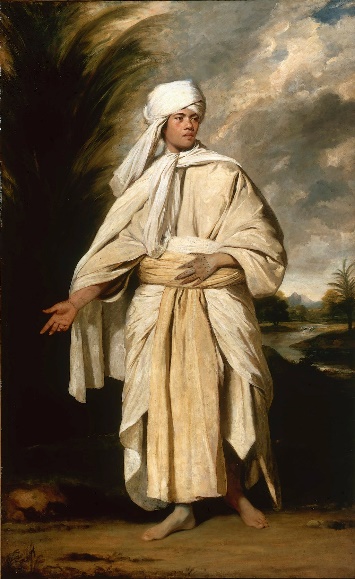 Sir Joshua Reynolds is one of the most famous British portraitists of the eighteenth century. He captured the likenesses of military officers, barons, earls, dukes, and many more on his canvases, which earned him a position as president of the Royal Academy of Arts and Principal Painter to King George III. And now, the British government is emphasizing Reynolds’s cultural importance because one of his most well-known works is at risk of leaving Britain forever.
Sir Joshua Reynolds is one of the most famous British portraitists of the eighteenth century. He captured the likenesses of military officers, barons, earls, dukes, and many more on his canvases, which earned him a position as president of the Royal Academy of Arts and Principal Painter to King George III. And now, the British government is emphasizing Reynolds’s cultural importance because one of his most well-known works is at risk of leaving Britain forever.
Portrait of Omai has spent most of its life at Castle Howard in Yorkshire. The subject, Omai, was the first Polynesian person to visit Britain after arriving with Captain James Cook in 1774 and soon became a sensation in London. He met with members of the Royal Society, as well as Samuel Johnson, Lord Sandwich, and King George III. During his second year in Britain, Sir Joshua Reynolds decided to paint Omai’s portrait independently, without any commission. Typical of the Grand Manner portraiture Reynolds preferred, Omai stands resplendent in white robes and a turban, posing in a style similar to the famous Apollo Belvedere statue now in the Vatican Museums.
The portrait was last sold at Sotheby’s London in 2001 for a hammer price of £9.3 million (or $13.1 million), making it the second most-valuable painting by a British artist at the time. The British government now claims the work is worth around £50 million (or $60.8 million), and has been looking for a buyer for the past year to put up the money necessary to keep the painting in the country. Boris Johnson’s government first hit the painting with an export bar in March 2022 that expired in July but was extended to run through March 10, 2023. London’s National Portrait Gallery reportedly raised £25 million by early December 2022, only half the amount necessary. The NPG hoped to acquire the work and have it ready for its reopening after a three-year closure due to the pandemic and extensive renovations.
Christopher Baker, director of European and Scottish Art and Portraiture at the National Galleries of Scotland, commented that having the painting remain in Britain “would have profound benefits and allow the numerous and riveting historical and artistic narratives it embodies to be fully developed and shared.” As hopeful as Baker is, using an export bar has a surprisingly low success rate. Though the export bar is a useful tool many governments use to keep national treasures in the country, export bars in Britain are only used successfully once in every three times. Furthermore, the export bar is most useful when there is widespread public support to have the work remain in the country, which was, unfortunately, lacking in Britain. Lucy Ward of The Guardian wrote, “Omai may yet vanish, partly because no one stood up early enough and fought for it.” Now that the export bar has expired, the British government cannot do much else to keep Omai in the country, and Britain may have to be forced to say goodbye forever.
Roadshow Rarity: Early Hockney Work Featured on BBC Program
Antiques Roadshow, both the American and original British versions, is a lovely program that allows people to rummage through their attics and storage units to see if some family heirlooms have any real monetary value. In one episode of the British show that aired recently, a man made an extraordinary claim about a painting his family owns that’s not so far-fetched after all.
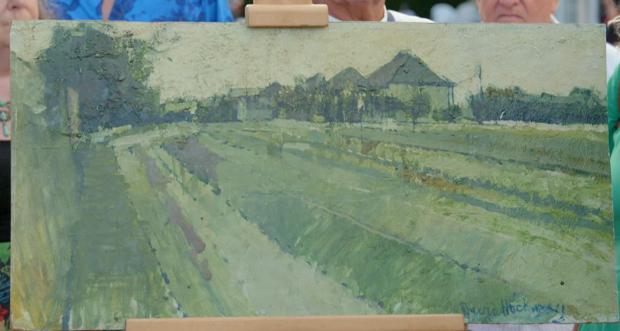 An anonymous gentleman brought a rather drab landscape painting to where Antiques Roadshow was shooting at Belmont House in Kent in southeastern England. In talking to one of the show’s art experts, Rupert Maas, he claimed that this rather ordinary painting is an early work by none other than David Hockney, one of Britain’s most famous and influential living artists. Of course, it’s no wonder why many present were skeptical of the claim. Hockney is mostly known for bright, bold colors in his works, whether it’s a painting, a print, or an iPad drawing. The story goes that, in 1957, the man’s grandfather was working as a railway signalman near Felixstowe, a coastal town in Suffolk. He saw two young men waiting on the train station platform with artists’ equipment there. His grandfather invited the two into the signal box for a cup of tea and later invited them back to his family home for Sunday lunch. Given they were poor art students, the man said that his grandfather offered to buy a painting from each of them, resulting in the family owning this rather plain pastoral landscape with the signature at the bottom-right reading “David Hockney”.
An anonymous gentleman brought a rather drab landscape painting to where Antiques Roadshow was shooting at Belmont House in Kent in southeastern England. In talking to one of the show’s art experts, Rupert Maas, he claimed that this rather ordinary painting is an early work by none other than David Hockney, one of Britain’s most famous and influential living artists. Of course, it’s no wonder why many present were skeptical of the claim. Hockney is mostly known for bright, bold colors in his works, whether it’s a painting, a print, or an iPad drawing. The story goes that, in 1957, the man’s grandfather was working as a railway signalman near Felixstowe, a coastal town in Suffolk. He saw two young men waiting on the train station platform with artists’ equipment there. His grandfather invited the two into the signal box for a cup of tea and later invited them back to his family home for Sunday lunch. Given they were poor art students, the man said that his grandfather offered to buy a painting from each of them, resulting in the family owning this rather plain pastoral landscape with the signature at the bottom-right reading “David Hockney”.
Though it sounds a little too good to be true, Maas dug up some information that makes the whole story sound a bit more plausible. When this story allegedly occurred, Hockney was in his last year at Bradford College in West Yorkshire. In that year, he and another student named John Locker made a trip down to Suffolk because they were great admirers of the landscape painter John Constable, who frequently featured the countryside of his native Suffolk in his work. Maas described the painting as “very rough and ready”, and commented on the work’s dull color palette, saying, “I have this idea they only had green and brown with them, because they were broke.” The owner hoped the work would be worth around £10K (or $12.2K). He seemed overcome when Rupert Maas said that it would more likely sell for £20K to £30K (or $24.4K to $36.7K).
Lego Lilies: Ai Weiwei’s Newest Work In London
 The Design Museum, located less than ten minutes from Kensington Palace in London, has been an exhibition space for graphic arts, architecture, fashion, and much more since the late 1980s. But it’s receiving attention right now because of a new exhibition by one of the world’s most famous living artists. Ai Weiwei is a Chinese dissident artist who has lived and worked abroad for eight years. Keeping with the mission of the Design Museum, Ai used commercial products to create his latest work: about 650,000 of them in 22 different colors. Ai has created a 50-foot-wide painting made entirely of Legos based on Claude Monet’s Water Lilies paintings.
The Design Museum, located less than ten minutes from Kensington Palace in London, has been an exhibition space for graphic arts, architecture, fashion, and much more since the late 1980s. But it’s receiving attention right now because of a new exhibition by one of the world’s most famous living artists. Ai Weiwei is a Chinese dissident artist who has lived and worked abroad for eight years. Keeping with the mission of the Design Museum, Ai used commercial products to create his latest work: about 650,000 of them in 22 different colors. Ai has created a 50-foot-wide painting made entirely of Legos based on Claude Monet’s Water Lilies paintings.
Between 1897 and 1926, Claude Monet created about 250 paintings of water lilies from the garden of his home in Giverny, about an hour west of Paris. Many hang in some of the world’s greatest art institutions, including the Musée d’Orsay, the Metropolitan Museum of Art, the Museum of Modern Art, London’s National Gallery, Boston’s Museum of Fine Arts, the Art Institute of Chicago, and Jerusalem’s Israel Museum. Collectively, in the century since their creation, they’ve become some of the most emblematic symbols of Impressionist art, French art, and western art as a whole. Entitled Water Lilies #1, Ai primarily based his rendition on the enormous triptych Monet created between 1914 and 1926 that now hangs at New York’s Museum of Modern Art. Ai’s rendition brings the lilies into the next century by using a more modern, commercial product as the medium. Furthermore, the Legos resemble pixels, taken from a screen and made into physical, plastic form. Other than the medium and the color, the only major change made is a large dark patch that Ai included, which the museum calls a “dark portal”. It refers to Ai’s childhood in Xinjiang, where his father was internally exiled during the Cultural Revolution. As the museum puts it, “Their hellish desert home punctures the watery paradise.”
Ai has used Legos in the past, including creating portraits of political prisoners and human rights abuse victims. In 2015, Lego initially denied his request to ship their product to his studio in bulk, which they later reversed. When the initial denial made the news, supporters sent small amounts of their own Lego bricks to his studio. Collages and mosaics seem to be a running theme in his new exhibition, “Making Sense”. For example, one featured work is a sculpture created from the fragments of other sculptures that were destroyed when Chinese authorities demolished his Beijing studio in 2018. The exhibition opens on April 7th and will run until July 30th. Tickets are already sold out online.
The Rehs Family
© Rehs Galleries, Inc., New York – April 2023


